Report Details
Not found what are you looking for

Consumer Goods
Textile Auxiliaries Market: Segmented By Type (Dyeing & Printing Agents, Pretreatment Agents, Finishing Agents and Spin Finish, Knitting & Weaving), By End user (Technical Textiles, Home Furnishings, Apparel and Industrial Textiles), and Region – Global Analysis of Market Size, Share & Trends for 2019–2020 and Forecasts to 2030
Description
ToC
Tables & Figures
Companies
Speak with Analyst
[ 176 + Pages Research Report ]Textile Auxiliaries Market to surpass USD 12.2 billion by 2030 from USD 8.5 billion in 2020 at a CAGR of 5.4% in the coming years, i.e., 2021-30.
Product Overview
Textile auxiliaries Market are chemical chemicals that aid in the processing of textiles, such as printing, dyeing, and preparing, and are required to achieve the desired effect. Fabrics and yarns are even dyed and washed with them. The primary consideration in selecting textile materials is the intended use, however, color is currently regarded as the best salesman. The most recent trend is to insist on a color that is easy to wash, rub, lighten, and bleach. Textile processing is primarily utilized during the processing of textiles to increase their durability and aesthetic appeal. Textile auxiliaries have grown their use in the textile industry as a result of their ability to improve the functional qualities of textile products.
Market Highlights
Global Textile Auxiliaries market is expected to project a notable CAGR of 5.4% in 2030.
Global Textile Auxiliaries Market to surpass USD 12.2 billion by 2030 from USD 8.5 billion in 2020 at a CAGR of 5.4% in the coming years, i.e., 2021-30. Due to rigorous government rules governing the use of harmful chemicals in textiles, the market for natural and environmentally friendlier textile auxiliaries is expected to rise. With textiles increasingly being adopted for a variety of uses such as clothes, home furnishings, and others, there has been an explosion of activity in the larger textile sector, as well as consistent growth in the textile auxiliaries market. Because of the thriving clothing trade in both developed and developing countries throughout the world, apparel continues to be a leading application area in the textile auxiliaries market.
Global Textile Auxiliaries Market: Segments
Dyeing & Printing Agents segment to grow with the highest CAGR during 2020-30
Global Textile Auxiliaries market is segmented by type into Dyeing & Printing Agents, Pretreatment Agents, Finishing Agents and Spin Finish, Knitting & Weaving. The amylase segment held the largest market share in the year 2020. The dyeing and printing agents product segment, in particular, commanded a sizable market share in 2020, and this trend is expected to continue throughout the projected period. Dyeing auxiliaries are chemically articulated items used in the dyeing and printing processes. These auxiliaries provide vital assistance to fabrics during dyeing and printing operations, allowing them to achieve the desired characteristics and textures.
Apparel segment to grow with the highest CAGR during 2020-30
Global Textile Auxiliaries market is divided by end user into Technical Textiles, Home Furnishings, Apparel and Industrial Textiles. Furniture, carpets & rugs, and other items are included in the home furnishings category. In 2020, the apparel application category accounted for a significant portion of the worldwide textile auxiliaries market, and it is expected to grow even more throughout the forecast period. Apparel is worn by a large number of people all around the world. Active wear and personal clothes, such as t-shirts, shirts, trousers, tops, blazers, sportswear, daily wear, and other garments, are common uses.
Market Dynamics
Drivers
Increased use of technological textiles
Technical fabrics provide strength, resistance, and protection against a variety of contaminants and environmental variables. Growing infrastructure development and rapid urbanization, particularly in BRIC nations, are driving demand for Builder, a technological textile that is more durable and effective than traditional textiles. It's mostly employed in building and architecture for things like faced foundations, insulation, and concrete reinforcement. During the assessment period, the increased use of technical textiles is expected to drive the market for textile auxiliaries.
Usage in various applications and increased government expenditure
Textiles used in cleanliness, health, and surgical applications are included in the textiles category. It is expected to witness significant growth in the forecast period; this is mostly due to increased government and per capita healthcare spending around the world. Growing awareness of health and hygiene in emerging economies is driving demand for technical textile-based healthcare goods including baby diapers and sanitary napkins.
Restraint
Environmental risk associated with the market
Textile manufacture is a resource-intensive operation that uses a lot of fuel, water, and a range of chemicals all over the world. In recent years, there has been increased worry about the amount of toxic waste produced by the textile production process, which poses a substantial environmental risk. As a result, various regulatory organizations throughout the world have enacted strict rules to regulate these processes, which are expected to have a negative impact on the worldwide textile auxiliaries market's growth.
Global Textile Auxiliaries: Key Players
Kemira
Company Overview, Business Strategy, Key Product Offerings, Financial Performance, Key Performance Indicators, Risk Analysis, Recent Development, Regional Presence, SWOT Analysis
Evonik
Akzo
Nobel
Huntsman Corporation
Tata Chemicals Limited
DyStar Group
Dow Chemical Company
Archroma
Zschimmer and Schwarz GmbH & Co KG
Other Prominent Players
Global Textile Auxiliaries Market: Regions
Global Textile Auxiliaries market is segmented based on regional analysis into five major regions. These include North America, Latin America, Europe, Asia Pacific, and the Middle East, and Africa. The market in APAC is expected to hold the highest CAGR over the forecasted period. Due to the development of the textile sector in developing nations such as India, Asia Pacific is expected to see rapid growth in the global textile auxiliaries market in the coming years. As a result, the expansion of the textile industry is expected to increase demand for textile auxiliaries, which aid in the refinement of the fabric's overall quality, encouraging the growth of the textile auxiliaries market in the region. China's textile sector is the world's largest in terms of exports and output. Because of low power rates, low raw cotton prices, and transportation subsidies, investment in the country's textile industry has increased
Global Textile Auxiliaries is further segmented by region into:
North America Market Size, Share, Trends, Opportunities, Y-o-Y Growth, CAGR – The United States and Canada
Latin America Market Size, Share, Trends, Opportunities, Y-o-Y Growth, CAGR – Mexico, Argentina, Brazil and Rest of Latin America
Europe Market Size, Share, Trends, Opportunities, Y-o-Y Growth, CAGR – United Kingdom, France, Germany, Italy, Spain, Belgium, Hungary, Luxembourg, Netherlands, Poland, NORDIC, Russia, Turkey and Rest of Europe
Asia Pacific Market Size, Share, Trends, Opportunities, Y-o-Y Growth, CAGR – India, China, South Korea, Japan, Malaysia, Indonesia, New Zealand, Australia, and Rest of APAC
The Middle East and Africa Market Size, Share, Trends, Opportunities, Y-o-Y Growth, CAGR – North Africa, Israel, GCC, South Africa, and Rest of MENA
Global Textile Auxiliaries Market report also contains analysis on:
Textile Auxiliaries Market Segments:
By Type
Dyeing & Printing Agents
Pretreatment Agents
Finishing Agents
Spin Finish, Knitting & Weaving
By End User
Technical Textiles
Home Furnishings
Apparel
Industrial Textiles
Textile Auxiliaries
DynamicsTextile Auxiliaries
SizeSupply & Demand
Current Trends/Issues/Challenges
Competition & Companies Involved in the market value Chain of the Market
Market Drivers and Restraints
Textile Auxiliaries Market Report Scope and Segmentation
Report Attribute Details
Market size value in 2020 USD 8.5 billion
Revenue forecast in 2030 USD 12.2 billion
Growth Rate CAGR of 5.4% from 2021 to 2030
Base year for estimation 2020
Quantitative units Revenue in USD million and CAGR from 2021 to 2030
Report coverage Revenue forecast, company ranking, competitive landscape, growth factors, and trends
Segments covered Type, end-user, and Region
Regional scope North America, Europe, Asia Pacific, Latin America, Middle East & Africa (MEA)
Key companies profiled Kemira, Evonik, AkzoNobel, Huntsman Corporation, Tata Chemicals Limited, DyStar Group, Dow Chemical Company, Archroma, Zschimmer, and Schwarz GmbH & Co KG and Other Prominent Players.
FAQ
- You should buy this report from Xcellent Insights for a better clarity on market scenarios.
- The market report has been prepared using a pragmatic approach to suit your needs.
- We have an extensive library of reports that can help you understand the market landscape and make informed decisions about your business.
- Additionally, the reports are written by experienced analysts who have a deep understanding of the market and the latest trends.
- Besides, customization is a value-added service if you decide to opt.
Table of Content
Contents
1. Executive Summary
2. Global Textile Auxiliaries Market
2.1. Product Overview
2.2. Market Definition
2.3. Segmentation
2.4. Assumptions and Acronyms
3. Research Methodology
3.1. Research Objectives
3.2. Primary Research
3.3. Secondary Research
3.4. Forecast Model
3.5. Market Size Estimation
4. Average Pricing Analysis
5. Macro-Economic Indicators
6. Market Dynamics
6.1. Growth Drivers
6.2. Restraints
6.3. Opportunity
6.4. Trends
7. Correlation & Regression Analysis
7.1. Correlation Matrix
7.2. Regression Matrix
8. Recent Development, Policies & Regulatory Landscape
9. Risk Analysis
9.1. Demand Risk Analysis
9.2. Supply Risk Analysis
10. Global Textile Auxiliaries Market Analysis
10.1. Porter Five Forces
10.1.1. Threat of New Entrants
10.1.2. Bargaining Power of Suppliers
10.1.3. Threat of Substitutes
10.1.4. Rivalry
10.2. PEST Analysis
10.2.1. Political
10.2.2. Economic
10.2.3. Social
10.2.4. Technological
11. Global Textile Auxiliaries Market
11.1. Market Size & forecast, 2020A-2030F
11.1.1. By Value (USD Million) 2020-2030F; Y-o-Y Growth (%) 2021-2030F
11.1.2. By Volume (Million Units) 2020-2030F; Y-o-Y Growth (%) 2021-2030F
12. Global Textile Auxiliaries Market: Market Segmentation
12.1. By Regions
12.1.1. North America:(U.S. and Canada), By Value (USD Million) 2020-2030F; Y-o-Y Growth (%) 2021-2030F
12.1.2. Latin America: (Brazil, Mexico, Argentina, Rest of Latin America), By Value (USD Million) 2020-2030F; Y-o-Y Growth (%) 2021-2030F
12.1.3. Europe: (Germany, UK, France, Italy, Spain, BENELUX, NORDIC, Hungary, Poland, Turkey, Russia, Rest of Europe), By Value (USD Million) 2020-2030F; Y-o-Y Growth (%) 2021-2030F
12.1.4. Asia-Pacific: (China, India, Japan, South Korea, Indonesia, Malaysia, Australia, New Zealand, Rest of Asia Pacific), By Value (USD Million) 2020-2030F; Y-o-Y Growth (%) 2021-2030F
12.1.5. Middle East and Africa: (Israel, GCC, North Africa, South Africa, Rest of Middle East and Africa), By Value (USD Million) 2020-2030F; Y-o-Y Growth (%) 2021-2030F
12.2. By Type : Market Share (2020-2030F)
12.2.1. Dyeing & Printing Agents, By Value (USD Million) 2020-2030F; Y-o-Y Growth (%) 2021-2030F
12.2.2. Pretreatment Agents, By Value (USD Million) 2020-2030F; Y-o-Y Growth (%) 2021-2030F
12.2.3. Finishing Agents, By Value (USD Million) 2020-2030F; Y-o-Y Growth (%) 2021-2030F
12.2.4. Spin Finish, Knitting & Weaving, By Value (USD Million) 2020-2030F; Y-o-Y Growth (%) 2021-2030F
12.3. By End User: Market Share (2020-2030F)
12.3.1. Technical Textiles, By Value (USD Million) 2020-2030F; Y-o-Y Growth (%) 2021-2030F
12.3.2. Home Furnishings, By Value (USD Million) 2020-2030F; Y-o-Y Growth (%) 2021-2030F
12.3.3. Apparel, By Value (USD Million) 2020-2030F; Y-o-Y Growth (%) 2021-2030F
12.3.4. Industrial Textiles, By Value (USD Million) 2020-2030F; Y-o-Y Growth (%) 2021-2030F
Company Profile
1. Kemira
1. Company Overview
2. Company Total Revenue (Financials)
3. Market Potential
4. Global Presence
5. Key Performance Indicators
6. SWOT Analysis
7. Product Launch
2. Evonik
3. AkzoNobel
4. Huntsman Corporation
5. Tata Chemicals Limited
6. DyStar Group
7. Dow Chemical Company
8. Archroma
9. Zschimmer and Schwarz GmbH & Co KG
10. Other Prominent Players
Consultant Recommendation
The above given segmentations and companies could be subjected to further modification based on in-depth feasibility studies conducted for the final deliverable.
Tables and Figures
Contact our Sales Team for List of Tables & Figures.
Key Players
Kemira
Company Overview, Business Strategy, Key Product Offerings, Financial Performance, Key Performance Indicators, Risk Analysis, Recent Development, Regional Presence, SWOT Analysis
Evonik
Akzo
Nobel
Huntsman Corporation
Tata Chemicals Limited
DyStar Group
Dow Chemical Company
Archroma
Zschimmer and Schwarz GmbH & Co KG
Other Prominent Players
Glob
Why Choose Us
- Extensive Library of Reports.
- Identify the clients' needs.
- Pragmatic Research Approach.
- Clarity on Market Scenarios.
- Tailor-Made Solutions.
- Expert Analysts Team.
- Competitive and Fair Prices.
Clientele
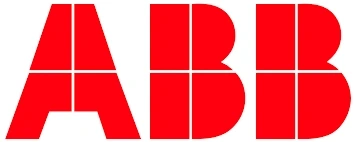
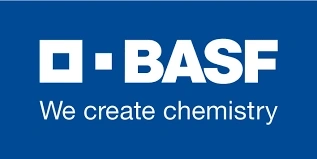
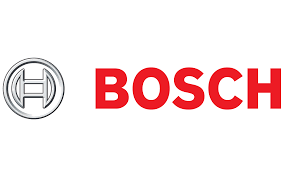
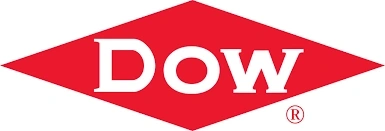
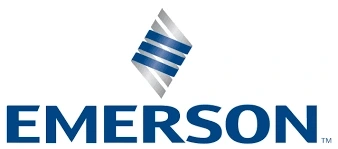
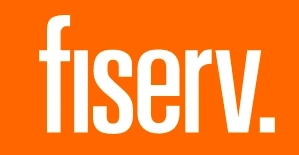
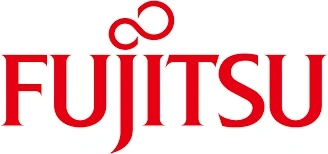
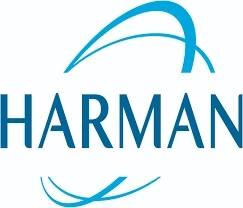
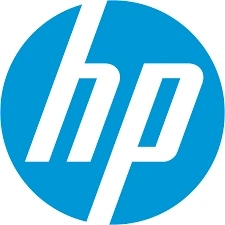

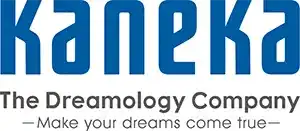
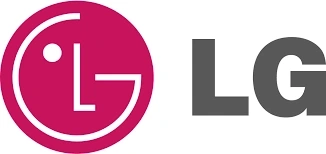

Thank you
Xcellent Insights has received your query!